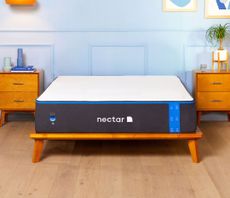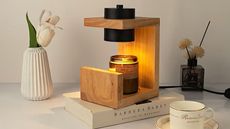The easiest way to get rid of bathroom ceiling mold
With the right products and tips from cleaning professionals, you can clean up bathroom ceiling mold easily
- (opens in new tab)
- (opens in new tab)
- (opens in new tab)
- Sign up to our newsletter Newsletter


Bathroom ceiling mold often shows its face in winter with cooler temperatures causing moisture to stick around longer. There are a few ways to get rid of black mold in the bathroom, and measures you can take to stop it in its tracks.
But spraying a shop-bought mold killer or your own white vinegar and water solution is the most straightforward. Mold left on the ceiling not only looks bad, but it will spread, and it can cause respiratory issues – so it's worth tackling now.
Make sure you keep the space well-ventilated and wear a mask as the mold removal process can release mold spores into the air. Here's how to get your bathroom ceiling mold-free.
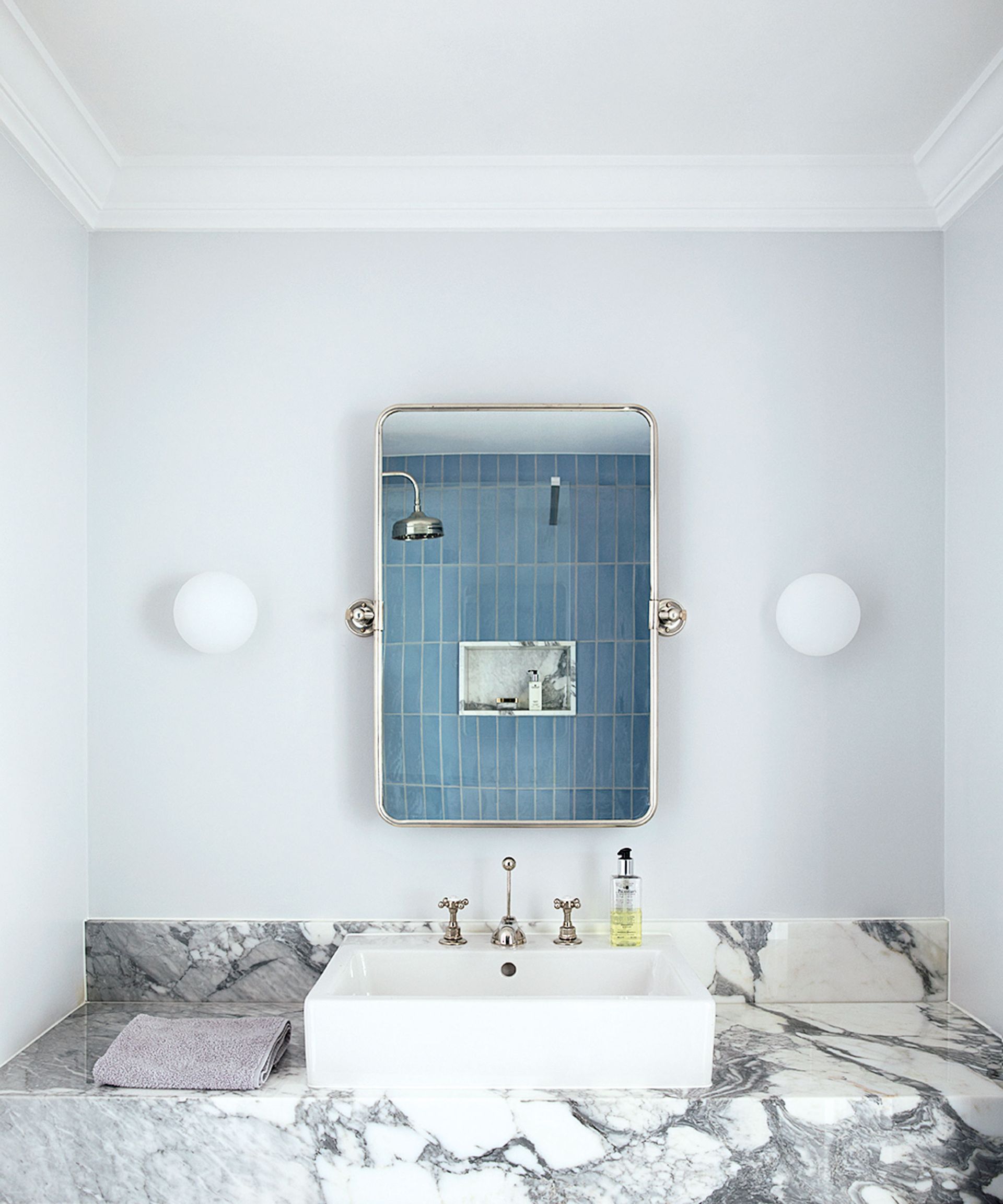
How to get rid of bathroom ceiling mold easily
Michael Rubino (opens in new tab) is a mold and air quality expert, and author of The Mold Medic, an Expert’s Guide on Mold Removal. He explains that mold grows roots called hyphae, which can reach within the surface that it’s growing on if it’s porous or semi-porous. That’s why it can be difficult to completely eliminate.
'Botanical products with surfactants are the best option,' says Michael, 'because they can help pull the particles to the surface so that they can be removed.' For semi-porous surfaces, specifically, hydrogen peroxide, at Amazon (opens in new tab) is a good option, followed by something like Benefect Decon 30 (opens in new tab).
Diana Rodriguez-Zaba is the head of IICRC-certified mold remediation company Service Master Chicago (opens in new tab). She recommends a commercial mold remover, at Amazon (opens in new tab) or cleaning with vinegar by mixing white vinegar and warm water.
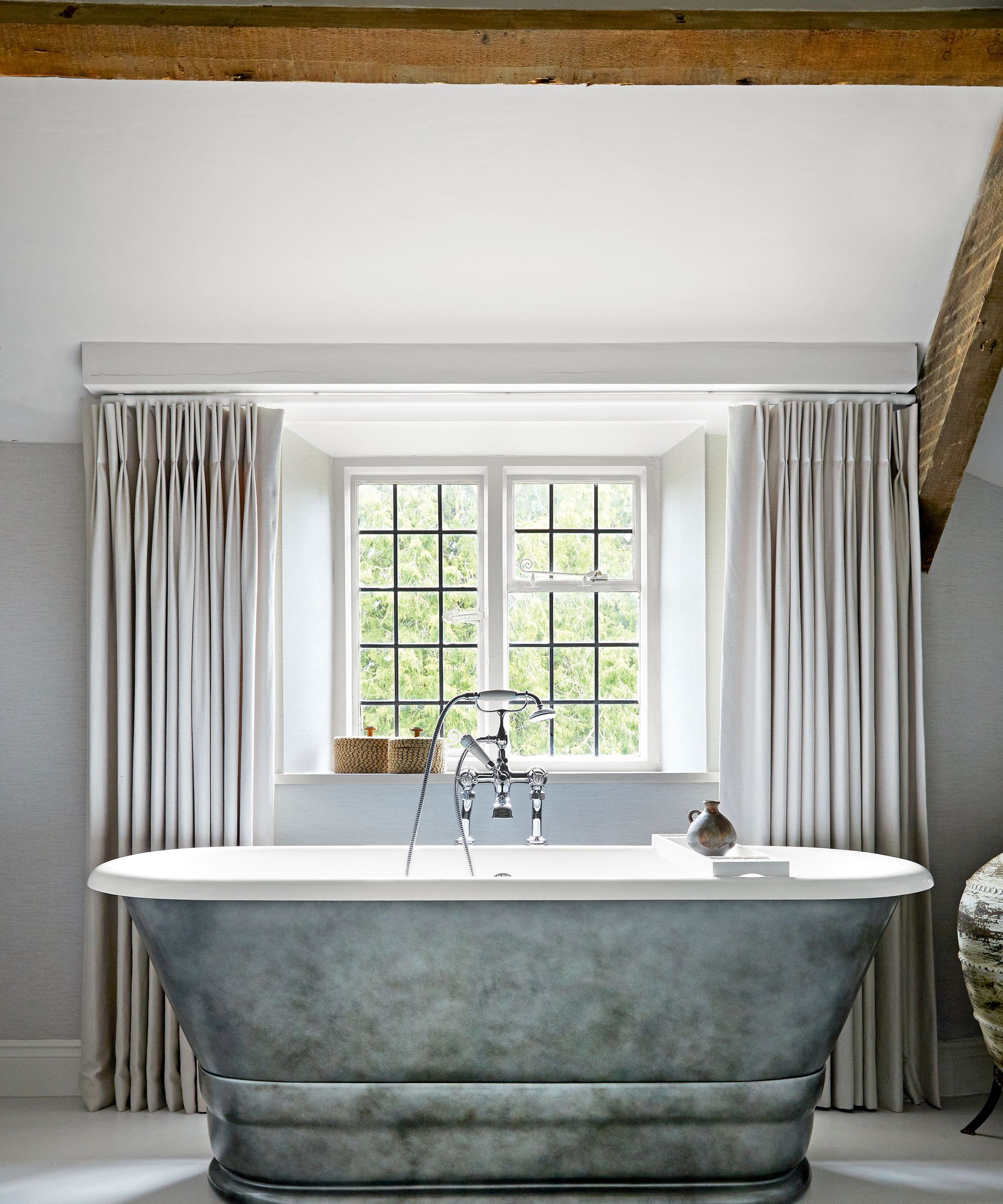
'Use a sponge to gently remove any visible mold from the ceiling. Be sure to wear protective gear, such as gloves, a face mask, and safety glasses,' she begins. 'Once you have removed any visible mold, spray the ceiling with the vinegar-water solution or commercial mold bleach.
'Let the cleaner sit for at least 15-20 minutes and then scrub the ceiling to remove any remaining mold,' she says. For hard-to-reach areas, dip a toothbrush in the solution and scrub. After that, rinse the area with fresh water and dry the ceiling with a towel.
Repeat this process if necessary, until all the mold has gone. If you have a textured ceiling experts recommend leaving mold removal to professionals as it calls for specialized ventilation masks and safety clothes.
How to stop mold from coming back
Prevention is always better than cure, and what Diana recommends is to give the walls a quick wipe with a towel whenever you get out of the shower. Or, you could use a squeegee, at Amazon (opens in new tab).
Small jobs like this will make it easier to keep on top of things so cleaning the bathroom never becomes a mammoth task that takes all day. Keeping doors and windows open also prevents mold by helping air to circulate, and quickly spraying walls when you see the first signs of mold will also keep it under control.
It's all well and good cleaning up the mold to make things look better, after all, no one wants to sit back in a hot bath to see a load of black dots on the ceiling. But it'll keep coming back unless you work out what's causing it, as cleaning expert Angela from Hellamaid (opens in new tab) explains.
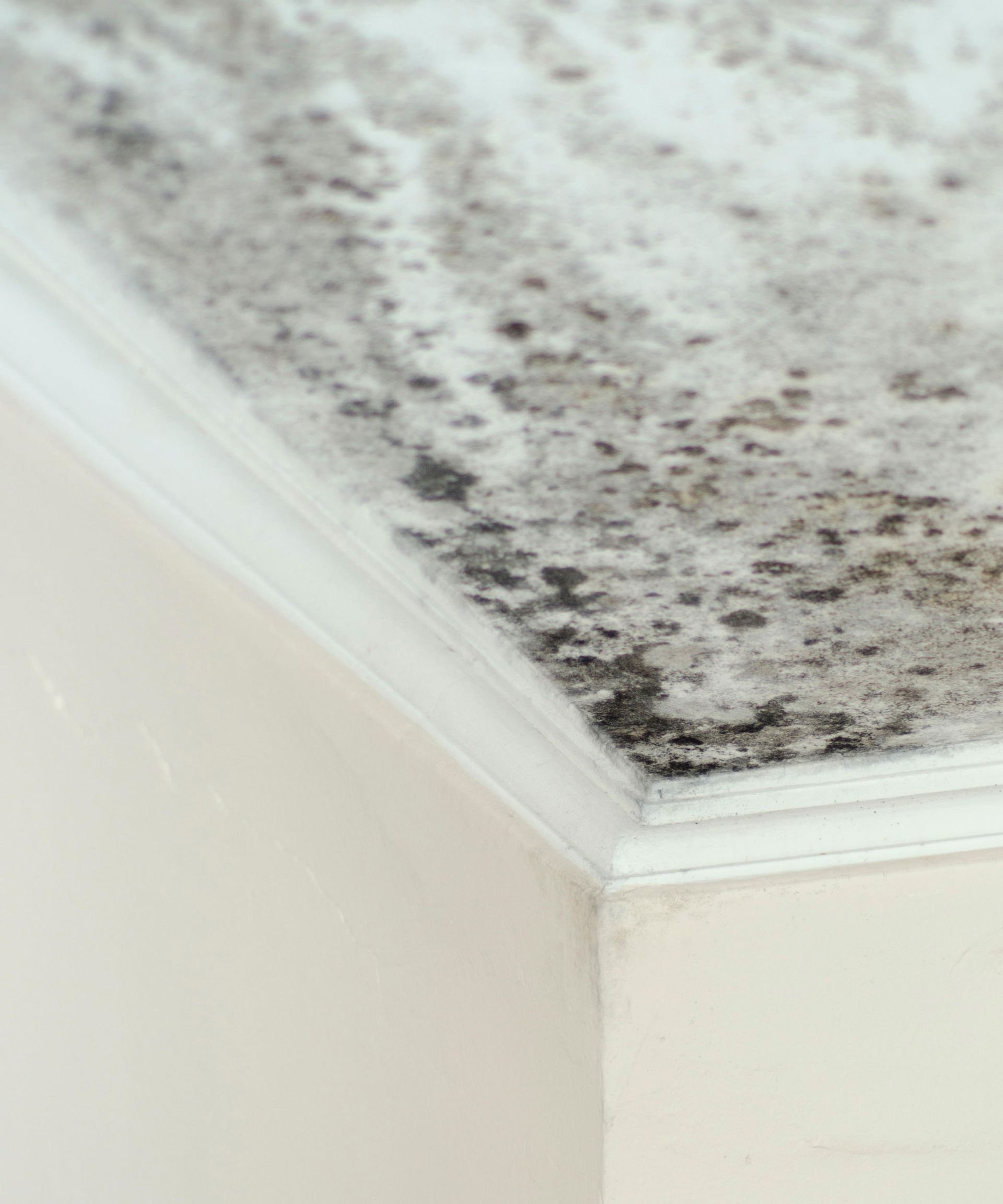
'You need to determine the source of the mold. If there is a leak, fix it first,' she says. 'If moisture is the culprit, install an exhaust fan and turn it on for 30 minutes every time you have a shower or bath.' She also suggests drying the floor regularly and not leaving damp towels in the bathroom.
Can vinegar kill mold on a bathroom ceiling?
Yes, vinegar will kill mold on a bathroom ceiling. Justin Carpenter, CEO at Modern Maids (opens in new tab) says white vinegar is an effective, natural way to get rid of mold from non-porous surfaces like tiles, countertops and walls. Like Diana, he suggests making a solution of equal parts white vinegar and water in a spray bottle. He recommends leaving it for a little longer, nearer an hour, and wiping it with a clean cloth. 'Vinegar can also be used to prevent further mold growth by spritzing it onto surfaces after cleaning,' he says.

Millie Hurst is Section Editor at Homes & Gardens, overseeing the Solved section, which provides readers with practical advice for their homes. She has been in the world of digital journalism for six years, having previously worked as Senior SEO Editor at News UK both in London and New York. She joined the Future team two years ago, working across a range of homes brands. Millie formerly worked as Senior Content Editor at Ideal Home, taking care of evergreen articles that help and inspire people to make the most of their homes and outdoor spaces. Millie has a degree in French and Italian and lives in North London.
-
-
 Nectar vs Tempur-Pedic: which mattress brand is best?
Nectar vs Tempur-Pedic: which mattress brand is best?Nectar vs Tempur-Pedic: could the iconic brand be brought to an end by a box mattress?
By Alex David • Published
-
 Candle warmers are the coziest home decor trend we've seen – here's why you need one
Candle warmers are the coziest home decor trend we've seen – here's why you need oneWe look at the benefits of candle warmers, and why you should have one in your home
By Chiana Dickson • Published
